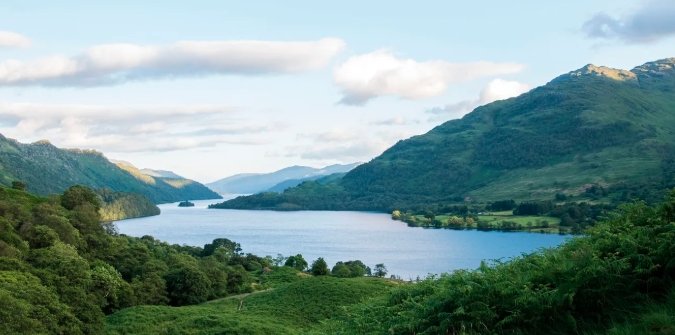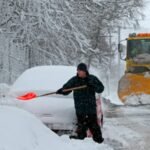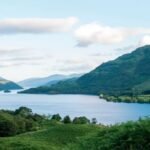Scotland’s government is pushing forward with the Natural Environment Bill, but Part 2 has ignited fierce opposition from environmental groups who fear it could weaken key safeguards for the country’s wild landscapes and wildlife. As the bill nears a critical deadline on October 31, 2025, campaigners from the Scottish Greens and others urge lawmakers to scrap these controversial powers to prevent exploitation by powerful interests.
What the Natural Environment Bill Aims to Achieve
The Natural Environment Bill, introduced in February 2025, seeks to address Scotland’s pressing environmental challenges amid ongoing climate and biodiversity crises. It outlines measures to restore habitats, set binding targets for biodiversity improvement, and update management practices for national parks and wild deer populations. Supporters highlight its potential to halt the decline of species and ecosystems that have suffered for decades.
Lawmakers at the Scottish Parliament are currently reviewing the bill at Stage 1, with evidence sessions wrapping up soon. The legislation responds to Scotland’s status as one of the world’s most nature-depleted nations, where nearly half of species have seen population drops in recent years. Experts point out that without bold action, iconic sites like the Highlands and coastal firths could face irreversible damage.
This bill builds on earlier commitments, such as the 2021 Bute House Agreement between the SNP and Scottish Greens, which promised stronger nature recovery efforts. However, recent budget cuts to agencies like NatureScot have raised doubts about implementation, with funding slashed by around 12.8 percent in the latest fiscal plans.

The Core Controversy Surrounding Part 2
Part 2 of the bill grants Scottish ministers broad authority to amend, revoke, or repeal existing environmental laws, including those on impact assessments that protect habitats from development harm. Critics argue this creates a “backdoor” for weakening regulations, allowing quick changes without full parliamentary scrutiny. Environmental organizations warn it could prioritize economic interests over ecological health, especially as pressure mounts from developers eyeing prime lands.
In a recent parliamentary report from September 30, 2025, MSPs echoed these worries, calling for safeguards like a “non-regression” clause to ensure protections only strengthen over time. The Royal Society of Edinburgh, in fresh evidence submitted just days ago, stressed that such powers risk undermining the bill’s restorative goals by translating EU-derived rules into domestic law in a way that dilutes them. Groups like the Chartered Institute of Ecology and Environmental Management have labeled it a dangerous precedent that could expose vulnerable species to greater threats.
This provision stems from the need to update post-Brexit environmental frameworks, but opponents say it goes too far, potentially enabling projects like luxury golf courses or theme parks to bypass vital checks. Recent examples, such as disputes over Coul Links dunes and Loch Lomond shores, illustrate how vested interests already test boundaries, and Part 2 might tip the scales further.
Environmental Campaigns Gain Momentum
The Scottish Greens have launched a high-profile “Defend Scotland’s Nature” drive, rallying thousands to email Cabinet Secretary Gillian Martin and demand the removal of Part 2. Their petition highlights treasures like red squirrels in ancient pine forests, puffins on rugged cliffs, and sea eagles over the Western Isles, framing the fight as essential for shared national wealth. Social media buzz, including calls from the RSPB Scotland, has amplified voices urging stronger wildlife restoration measures, with posts focusing on birds like swifts facing sharp declines.
Over 60 environmental charities, businesses, and community groups back the “Fight for Scotland’s Nature” coalition, pushing for ambitious targets in the bill. On platforms like X, users share stories of local actions, from birdwatching events to protests, while YouTube webinars by ecology experts dissect the bill’s flaws. Reddit discussions reveal public frustration, linking it to broader issues like land reform and missed climate goals, with many Scots demanding MSPs prioritize nature over profit.
These efforts tie into global trends, such as the UK’s push for ecocide laws that could jail executives for severe environmental harm, a concept gaining traction in Scotland too. The campaign’s goal of 500 supporters has surged past initial targets, reflecting widespread concern as Scotland grapples with record heatwaves and species losses in 2025.
- Key campaign demands include scrapping Part 2 entirely to avoid regulatory rollback.
- Adding enforceable biodiversity targets for at least 30 percent land and sea restoration by 2030.
- Boosting funding for NatureScot to counter recent cuts and support on-the-ground recovery.
Potential Impacts on Scotland’s Wildlife and Communities
If Part 2 proceeds unchanged, it could accelerate habitat loss in areas already under strain, affecting everything from coastal dolphins to mountain eagles. Scotland’s natural depletion, with one in nine species at extinction risk, makes this a high-stakes issue; the bill was meant to reverse that, not risk more erosion. Rural communities reliant on eco-tourism might suffer if wild coastlines and forests degrade, while urban dwellers lose access to green spaces vital for mental health.
On the flip side, proponents argue the powers streamline bureaucracy for green projects like renewable energy farms, aiding net-zero goals. Yet, balance is key; without checks, it might favor short-term gains, as seen in past controversies over billionaire-backed developments. Logical analysis shows that stronger protections could create jobs in restoration, with estimates of thousands in green sectors by 2030.
Recent events, like the 2025 summer floods linked to degraded peatlands, underscore the urgency. A table below outlines projected biodiversity targets under the bill versus current trends:
| Aspect | Current Status (2025) | Proposed Targets in Bill | Potential Risk from Part 2 |
|---|---|---|---|
| Biodiversity Improvement | 49% species decline since 1990 | Legally binding goals by 2026 | Easier repeal of habitat safeguards |
| Peatland Restoration | Off track for 250,000 hectares by 2030 | Enhanced funding and monitoring | Weaker impact assessments |
| Marine Protection | Firths under threat from pollution | Updates to national parks | Powers to modify sea regulations |
| Deer Management | Overpopulation in some areas | Mandatory training and licensing | Undermined self-regulation efforts |
This data, drawn from expert assessments, highlights why stakeholders push for amendments to secure long-term gains.
Government Stance and Path Forward
Scottish ministers defend Part 2 as necessary for flexible adaptation to new challenges, insisting it includes oversight mechanisms to prevent abuse. Cabinet Secretary Gillian Martin has faced calls in evidence sessions to commit to non-regression, but details remain vague. The government points to positive elements, like deer management reforms addressing overgrazing, which could benefit ecosystems if implemented well.
As the Stage 1 deadline looms, the Rural Affairs and Islands Committee weighs input from bodies like BASC, which worries about impacts on rural livelihoods such as farming and shooting. Broader context includes Scotland’s missed emissions targets and funding shortfalls, prompting questions about political will. Rewilding advocates, like those from Rewilding Britain, call for a “glow-up” to make the bill truly ambitious, focusing on marine areas often overlooked.
With public pressure building, MSPs have a chance to refine the legislation before it advances. Ties to international efforts, such as EU-aligned ecocide proposals, could bolster Scotland’s reputation as a nature leader if handled right.
Your voice matters in this debate on Scotland’s future. Share this article on social media, comment below with your thoughts on protecting our wild heritage, and contact your MSP to support scrapping Part 2 today.


















